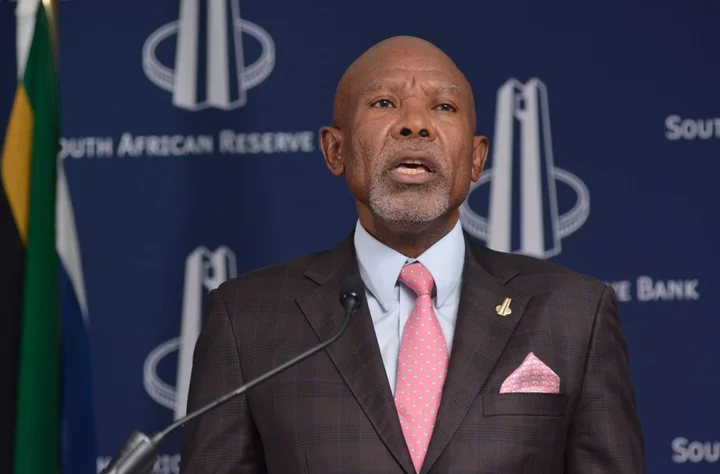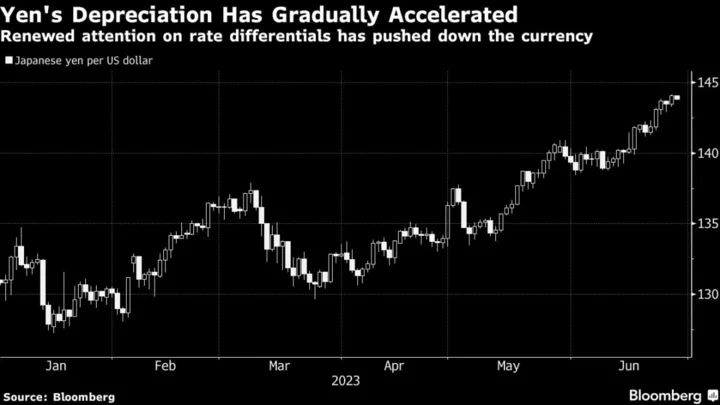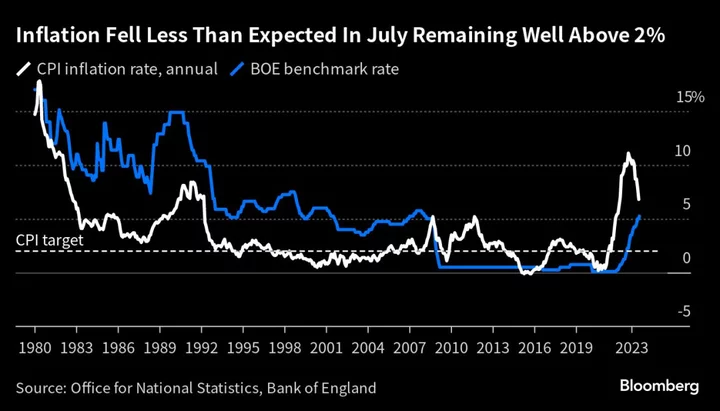South Africa’s central bank kept its benchmark interest rate unchanged, while warning that inflationary risks persist and that it stands ready to act if they materialize.
The monetary policy committee held the rate at a 14-year high of 8.25% for the third consecutive meeting, Governor Lesetja Kganyago said at a briefing north of Johannesburg on Thursday. That matched the forecasts of all 22 economists in a Bloomberg survey.
“At the current repurchase rate level, policy is restrictive, consistent with the inflation outlook and elevated inflation expectations,” Kganyago said. “Serious upside risks to the inflation outlook remain. In light of these risks, the Committee remains vigilant and stands ready to act should risks begin to materialize.”
The inaction on rates was backed by all of the MPC’s five members, the first time in more than two years they have made a unanimous decision. Prior to holding borrowing costs in July, the central bank raised them at 10 previous meetings, bringing the cumulative increase to 475 basis points since November 2021.
“The South Africa Reserve Bank’s unanimous decision to keep the repo rate on hold confirms the rate hike cycle has ended,” said Bloomberg’s Africa economist Yvonne Mhango. “The central bank’s next move is likely to be a rate cut in the fourth quarter of next year — we previously forecast this for mid-2024.”
The rand gained 0.3% to 18.83 per dollar by 4:13 p.m. in Johannesburg, while yields on benchmark government debt were little changed from Wednesday’s close at 11.66%. Forward-rate agreements, used to speculate on borrowing costs, adjusted lower and are now pricing in a full percentage point of rate cuts next year.
The bank prefers to anchor inflation expectations close to the midpoint of its 3% to 6% target range. Annual price growth quickened at its fastest pace in five months in October to 5.9% from 5.4% in September on higher transport costs and as South Africa’s worst outbreak of highly pathogenic bird flu led to a surge in the price of eggs and other poultry-related products.
Core inflation, which excludes food and energy costs, slowed to 4.4% from 4.5% in September, suggesting underlying price pressures may be dissipating.
“While inflation remains sticky, it is slowing,” said FNB Chief Economist Mamello Matikinca-Ngwenya. “Locally, lower fuel prices should support slower headline inflation before year-end, pushing real interest rates higher. More importantly, core inflation remains weak, despite higher import and electricity costs.”
The MPC’s quarterly projection model sees the repurchase rate at 7.55% by the end of next year and 7.32% at the end of 2025. It foresees the consumer inflation rate averaging 5.8% this year and 5% in 2024.
“We expect that we will come back to target sustainably in 2025,” Kganyago said. “There might be months in 2024 where inflation could be at 4.5%. When that happens don’t get excited.”
Read More: South Africa’s Central Bank Confirms Discussions to Tap Reserves
Thursday’s decision will be welcomed by households that are battling to make ends meet because of high borrowing costs and brisk inflation, and the floundering economy that’s being constrained by dysfunctional ports and rail networks and unreliable energy supply.
The central bank now expects the economy to grow 0.8% this year — marginally higher than its previous forecast of 0.7% — and 1.2% in 2024.
The bank has been “on a long hunt” for new MPC members, but can’t say quite when they will be appointed, Kganyago said. It was made public a month ago that Kuben Naidoo, whose second five-year term is due to expire at the end of March 2025, has tendered his resignation from the panel.
--With assistance from Monique Vanek.
(Updates with economist’s comments in second paragraph below second chart.)









